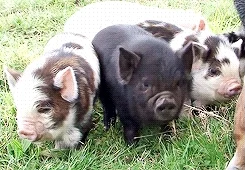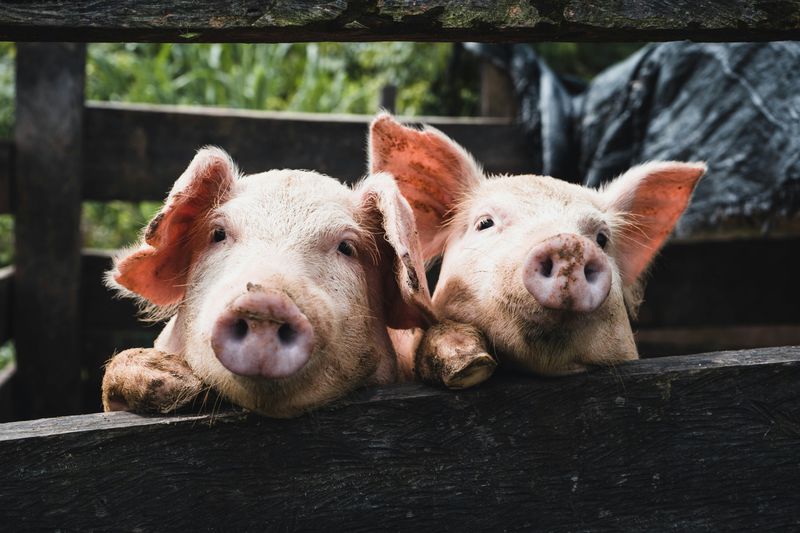
This logo isn't an ad or affiliate link. It's an organization that shares in our mission, and empowered the authors to share their insights in Byte form.
Rumie vets Bytes for compliance with our
Standards.
The organization is responsible for the completeness and reliability of the content.
Learn more
about how Rumie works with partners.
Three little pigs were living peacefully in their homes when a wolf tried to destroy their houses.
Have you ever wanted to tell that famous story, or any other story in English? You might have noticed that it's not that easy to tell stories in English if you don't know how to use the simple past and past continuous tenses together.

Simple Past and Past Continuous
To use these two tenses properly, first you need to understand their meaning and form (how they're written or said).

Simple Past
Describes something that happened only once and at one point in time (like if an arrow hit a bullseye)
Use it to describe something that happened once, then stopped
Has only one word: the base verb
Simple Past Examples
The three pigs left their parents' home.
They built their own homes.
They used different materials to build the houses.

Past Continuous
Describes something that happened over time (it kept happening)
It also describes something that happened for more than one second, or didn't finish right away
Has two words: was/were and the verb
Past Continuous Examples
The pigs were building their homes for weeks.
They were talking about which materials to use.
The wolf was looking for the pigs.
It is also possible to use both tenses in the same sentence. The most common way to do this is by joining two events together with a linking word like when or while.
Quiz
Which is an example of past continuous?
Past continuous always has was/were plus the verb. The other options could be said in some contexts, except for, "The wolf feeling hungry," which isn't grammatically correct.
With "When"
Follow these steps to create a sentence using both the simple past and past continuous tenses:
Use the past continuous tense to describe something that took some time to finish.
In the same sentence, use the simple past tense to describe something that happens once.
Put the word "when" in front of one of the simple past part of the sentence.
Here are some examples:
The first pig was sitting at home when the wolf came.
The pig was leaving when the wolf destroyed the house.
The wolf was celebrating when he noticed that the house was empty.
 Photo by MARIOLA GROBELSKA on Unsplash
Photo by MARIOLA GROBELSKA on UnsplashQuiz
Complete this sentence with the correct form of the verb: I ___ (read) social media when I ___ (find) this Byte.
"Reading" is something that takes place over a period of time, but "found" is something that happens in one moment. Therefore, "read" should use the past continuous tense and "find" should use the simple past tense.
Did you know?
Rumie is a nonprofit community dedicated to making innovative learning free for everyone.
With "While"
Follow these steps to create a sentence using both the simple past and past continuous tenses. Steps one and two are the same as a sentence that uses "when".
Use the past continuous tense to describe something that took some time to finish.
In the same sentence, use the simple past tense to describe something that happens once.
Put the word "while" in front of one of the past continuous part of the sentence.
Here are some examples:
While the second pig was watching TV, the first pig entered his house.
While they were planning what to do, the wolf arrived.
The wolf destroyed the house while the pigs were running away.
 Photo by Kenneth Schipper Vera on Unsplash
Photo by Kenneth Schipper Vera on UnsplashQuiz
Complete this sentence with the correct form of the verb: While I ___ (read) this Byte, I ___(see) a picture with two pigs
It took you more than one second to read the Byte, but only one second (or less) to see the picture.
Take Action
Now you understand the rules! All that's left is to get some practice. Try to complete the story. The third pig's house is made of brick and the wolf cannot destroy it. Use this info to finish the story!
 Photo by Hayden Mills on Unsplash
Photo by Hayden Mills on UnsplashOther ways you can practice using simple past and past continuous:
This Byte has been authored by
Sam Whittaker
English Teacher